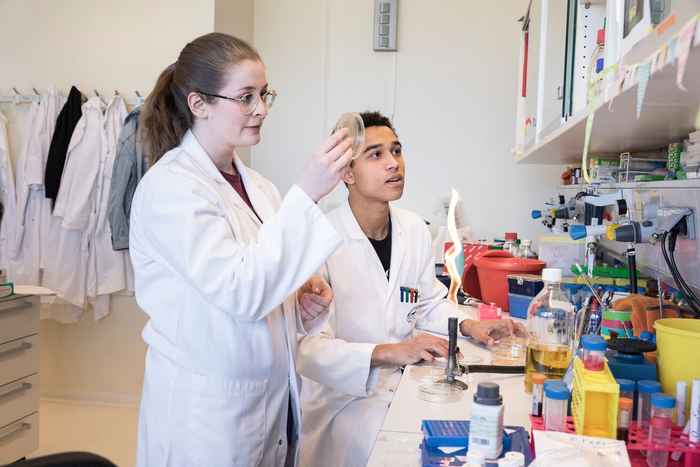Student projects at Bacterial Cell Biology
For inquiries regarding Bacterial Cell Biology, contact Leendert Hamoen. For inquiries regarding Molecular Microbial Physiology, contact Filipe Branco dos Santos.

A wide range of molecular biological techniques are used in the Bacterial Cell Biology group, including; PCR, cloning, transformation, site-directed mutagenesis, advanced fluorescence light microscopy, advanced image analysis, cross-linking, RNA isolation and transcriptomics, protein purification, and enzyme assays.
An overview of possible projects:
Project: How does a bacterial cell divide?
Cell division is vital yet we know surprisingly little about how this process occurs in bacteria. The aim of this project is to determine the minimal set of proteins that is required for bacterial cell division, and to study the interaction between these proteins. Ultimately, this information will be used to develop a synthetic bacterial cell.
Project: What determines the fission plain in bacteria?
The majority of rod-shaped bacteria divide by binary fission perpendicular to the length axes. A sub set of bacteria that live in symbiosis with nematodes divide longitudinally. How is this change in division plane evolved and what is needed to switch division plane? BY ectopic expression of the division proteins of division proteins of the longitudinally dividing bacteria in the cells that divide perpendicular we aim to force them to switch division plane. The proteins involved in longitudinal division are also studied biochemically in vitro.
Project: What is the function of the conserved cell division protein SepF?
We have discovered a new and important cell division protein; SepF. The aim of this project is to elucidate the working mechanism of this protein in cell division. SepF is present in many important pathogens including MRSA (Staphylococcus aureus) and TB (Mycobacterium tuberculosis). SepF is therefore an interesting drug-target, but then we have to know how it works.
Project: How does the bacterial cell ensures simultaneous invagination of its three-layered envelop?
A protein complex traverse the envelop of the bacteria and is recruited by the cell division machinery to ensure invagination of the outer membrane during division. How and when are these protein talking to each other is studied by Förster Resonance Energy Transfer.
Project: How can we kill antibiotic-resistant ‘persister’ cells?
Non-growing dormant bacterial cells are resistant to many antibacterial compounds. These so called persister cells cause chronic infections, food spoilage, and food poisoning. The aim of this project is to understand the physiology of persister cells and to find compounds that can kill them. One option is to generate reactive oxygen radicals (ROS) in these cells, to which the persister will succumb.
Project: How do bacteria know what they have to do what and at which moment during cell division?
Signal transducing systems that monitor the process of cell division are studied by fluorescence microscopy and mutational analysis and Förster Resonance Energy Transfer.